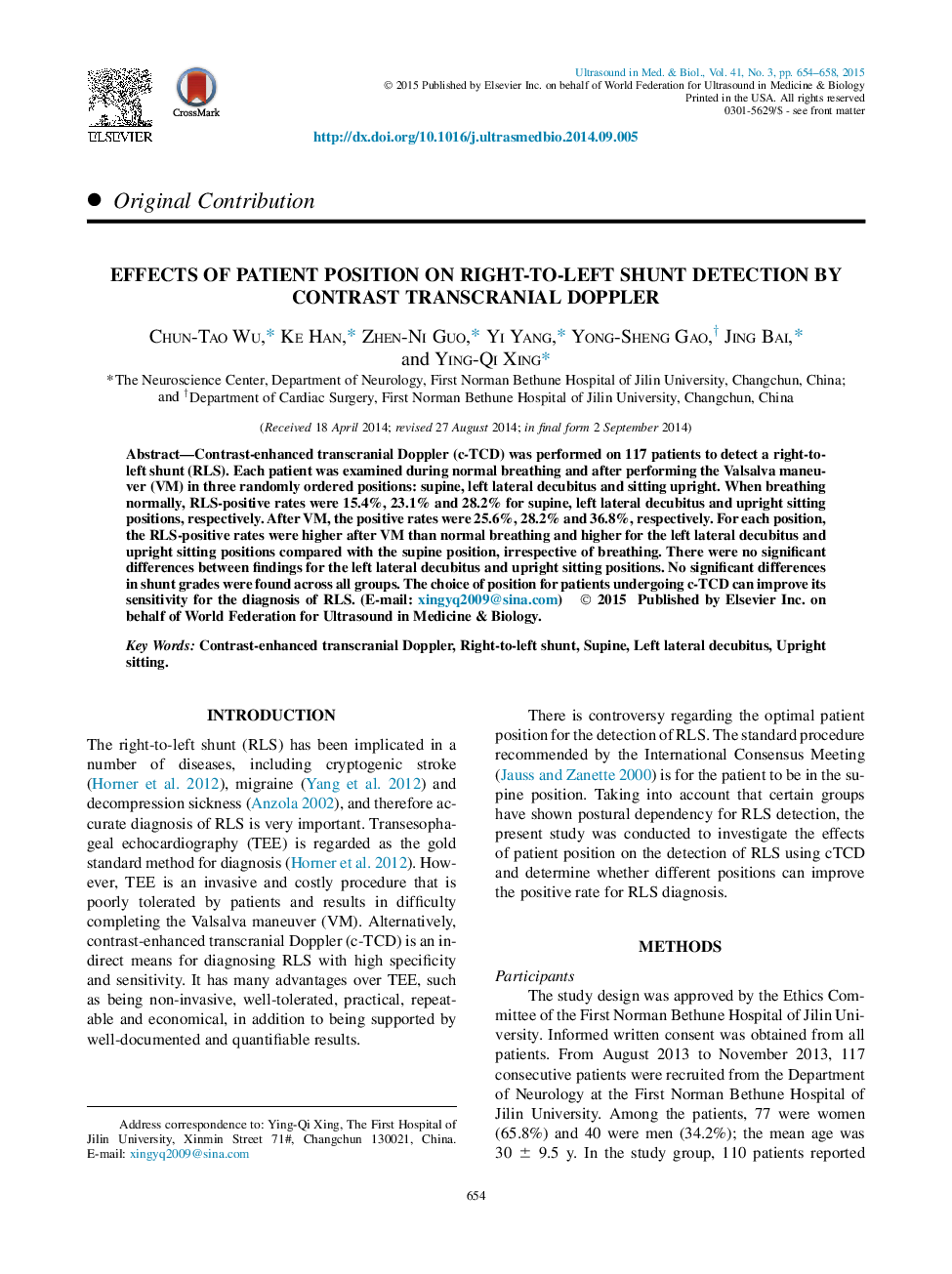| Article ID | Journal | Published Year | Pages | File Type |
|---|---|---|---|---|
| 10691325 | Ultrasound in Medicine & Biology | 2015 | 5 Pages |
Abstract
Contrast-enhanced transcranial Doppler (c-TCD) was performed on 117 patients to detect a right-to-left shunt (RLS). Each patient was examined during normal breathing and after performing the Valsalva maneuver (VM) in three randomly ordered positions: supine, left lateral decubitus and sitting upright. When breathing normally, RLS-positive rates were 15.4%, 23.1% and 28.2% for supine, left lateral decubitus and upright sitting positions, respectively. After VM, the positive rates were 25.6%, 28.2% and 36.8%, respectively. For each position, the RLS-positive rates were higher after VM than normal breathing and higher for the left lateral decubitus and upright sitting positions compared with the supine position, irrespective of breathing. There were no significant differences between findings for the left lateral decubitus and upright sitting positions. No significant differences in shunt grades were found across all groups. The choice of position for patients undergoing c-TCD can improve its sensitivity for the diagnosis of RLS.
Related Topics
Physical Sciences and Engineering
Physics and Astronomy
Acoustics and Ultrasonics
Authors
Chun-Tao Wu, Ke Han, Zhen-Ni Guo, Yi Yang, Yong-Sheng Gao, Jing Bai, Ying-Qi Xing,
